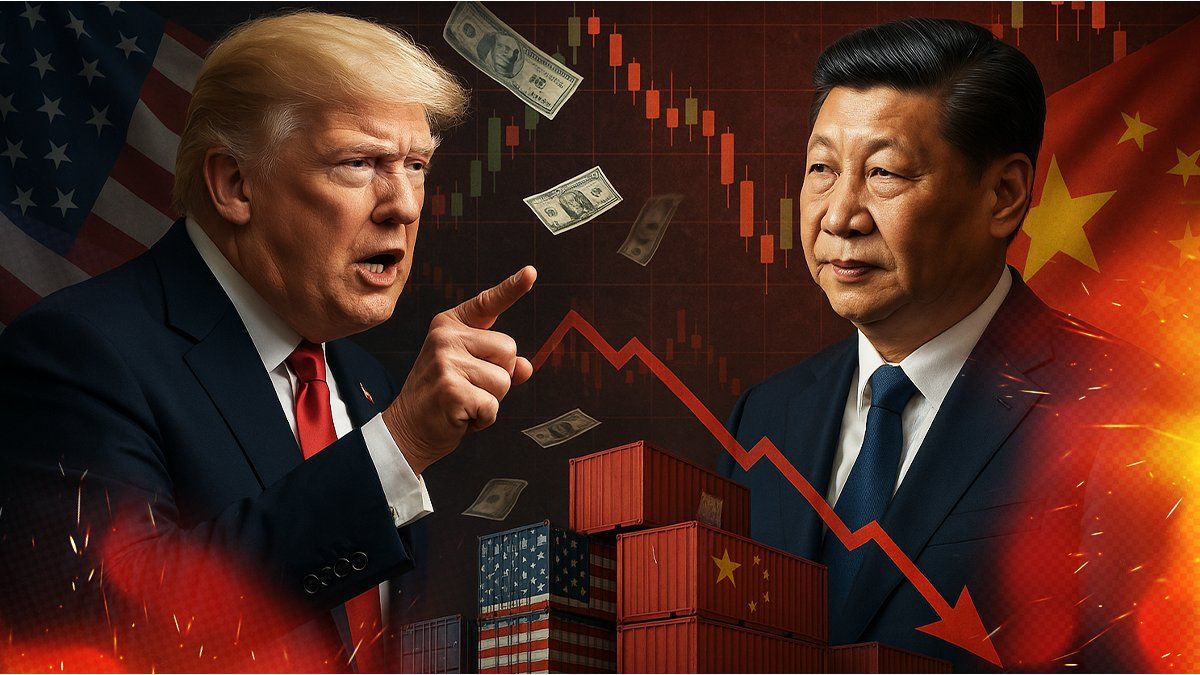What broke the stock market rally was commercial belligerence. How serious is this friction? Is it a declaration of war as it was interpreted? The hardest thing was not the blow itself, but receiving it off guard.
What can go wrong? Wall Street, firm in the task of climbing, makes its way record after record. Bills the push for technology and artificial intelligence; but now also from the small average companies, lacking sophistication and, many of them, profitability. The Russell 2000 participates in the rise along with the S&P 500 and the Nasdaq. And in recent times, even ahead. Uncertainty reigns everywhere you look. In the world that Trump governs, it is a functionality and not a defect to be corrected. But Wall Street was vaccinated after the April scare, and instead of following the conventional Sell in May mandate, it is growing high and wide with remarkable exuberance.
The content you want to access is exclusive to subscribers.
Audacious rises thanks to a handful of convictions. Long before Scott Bessent to help Argentina, the Secretary of the Treasury had to rescue the world from Trump’s excess; immunize him from his Liberation tariff crusade and his intention to extract from Congress, as in 2017, another tax reduction package. He achieved it, by the way, without the president giving up either of his two obsessions. Of course, the reciprocal tariffs had to be put in the freezer for 90 days. But, Today the average US tariff is 17.9%, the highest since 1934. And the One, Big, Beautiful Bill is law, enacted on July 4, without suffering further delays.


To guarantee peaceful coexistence, the secretary (and trader) had to do what his predecessor criticized so much, Janet Yellen. This is, markedly bias Treasury financing toward short-term bills. The fiscal deficit, constantly rising, points to 7% of GDP, but the tacit promise is that the issuance of Treasury bonds will not increase to cover it. That quasi-certainty lies subtly behind Wall Street’s audacity. Rates must be lowered immediately, Trump said in Davos, two days after taking office. Bessent then explained that it was not an order to the Fed, but was referring to long rates. Said and done: the high of the year, 4.80% for 10 years, was a last death rattle of the Biden era. It is the taming of long rates that makes possible Trump’s outbursts and the strength of risk markets, at the same time, and simultaneously, no matter how obscene or reckless. In other circumstances, the “bond vigilantes” They would shout to the sky and abort the maneuver. But Bessent bought his goodwill. Thanks to the inelastic supply of bonds, their money is protected. And thus it deactivated the alarms while encouraging risk-taking.
What Bessent and the markets need
What Bessent needs, and so do the markets, is for short rates to fall to facilitate the refinancing of a growing mass of Treasury bills. There are many reasons for the pressure on the central bank (Trump is a real estate developer and for him rates must always go down), but none is more urgent. That a Fed, under pressure but still independent, has resumed the path of cuts thus provides invaluable certainty for Wall Street (and for those who distrust, and accumulate gold, cryptocurrencies and other relics, barbaric or newly created). What could go wrong? Futures discount, with probabilities exceeding 97%, a second rate cut at the end of the month and a third in December. Of course, the Fed is not ignoring rising inflation, which would be serious. However, there is no rush to return it to the 2% corral, which is considered acceptable (as well as convenient and profitable for markets with very stable inflationary expectations).
What could go wrong, then? Excessive valuations are a visible threat, as clear as a cliff. If we take Shiller’s price-to-earnings ratio for the S&P 500 (the CAPE ratio, which is a measurement that smoothes out short-term swings), its current level -39.09 times- has only been surpassed once in history (since 1880). It was in the bubble that preceded the turn of the century, when the dazzle of dot-com companies ruled. Its maximum was 44.19 in December 1999. There will be those who correctly affirm that artificial intelligence is a more justified fervor, but this does not invalidate the dangers. Indeed, Bob Shiller received the Nobel Prize in Economics in 2013 for proving that valuations, although they exhibit great variance, invariably converge to the mean. And the average is just 17.29. We are warned.
Wall Street knows the literature, but is not guided by it. Choose to fly, like Icarus did. It turns out that high valuations per se do not cause bear markets. Rather, the recession is what opens the door when it eats away at companies’ profits and the multiples that command their prices. Could there be complications there? The balance sheets for the third quarter will begin to be released this week. And the Stock Market is licking its lips in anticipation. It is another firm conviction. Where does it come from? It turns out that earnings estimates were not reduced throughout the quarter, as is usual due to the negative bias of the mandatory pre-announcements. S&P 500 earnings are expected to grow 8% year-over-year today, but it wouldn’t be surprising to see them advance at a double-digit pace by the time the season ends. Hence, the strong tailwind.
What could go wrong, then? Yes, even geopolitics subsides with the ceasefire in Gaza. And Xi Jinping, finally, gives in to Tik Tok so that Trump can face the reality of the transfer of his property to friendly hands. But something can always go wrong. And it is not the partial closure of the government, the “shutdown” that is prolonged, and begins its third week with no signs of a solution. The markets are betting that it will not be fixed in less than two more. Trump, who has the record for the longest closure – 35 days between 2018 and 2019 – could well surpass himself in this area as well.
Wall Street accused the blow of commercial belligerence
No, what was ruined on Friday, What broke the rally was commercial belligerence despite the fact that we were generously vaccinated. And it was not Trump who threw the first stone, but Xi. On Thursday, China imposed new restrictions on its exports of rare earths, expanding the list of minerals under control and adding more severe conditions of use. For Trump, that was rubbing salt on the wounds left by the April struggle. Washington has no immediate answer to get around that chicane. Or, yes. On Friday Trump threw the hand grenade that turned the markets upside down. He promised to apply, starting November 1, an additional 100% tariff on all imports from China (in addition to export controls on all critical US software).
How serious is this friction? Is it a declaration of war as it was interpreted? A 100% tariff is prohibitive, it prevents bilateral trade as was already seen in the April escalation. It is, therefore, an instrument designed to speed up a negotiation (and the same could be said of China and the impact of rare earths). Trump said he no longer sees any reason to meet Xi Jinping, as planned, at the Apec summit in South Korea at the end of November. But Solving this mess when each one finishes showing the mettle of his leadership, and there is time for it, would be a good reason for both to congratulate each other.
However, Wall Street fully blamed the blow. The S&P500 fell 2.71% on Friday, its biggest setback in six months. The Nasdaq, 3.6%. The Russell 2000, 3%. The VIX index – a measure of volatility – soared 32%. Declining stocks outnumbered advancing ones 5 to 1. So much derision for a skirmish like so many others we have already seen, for the mere deja vu of the trade war? The hardest thing was not the blow itself, but receiving it off guard. A useful reminder, no doubt, that trees never grow to the sky, even if there is nothing in sight, or underground, that can go wrong. It is simply not verified. The bull market, which turned three years old on Sunday, is preserved intact, of course. Unlike the April crisis, this time there was no violent flight of capital, the Sell America. The dollar and Treasuries firmed. The question is whether the episode will lead to a small correction in the stock market, or whether good balance sheets will be enough to heal it.
Source: Ambito
I am a 24-year-old writer and journalist who has been working in the news industry for the past two years. I write primarily about market news, so if you’re looking for insights into what’s going on in the stock market or economic indicators, you’ve come to the right place. I also dabble in writing articles on lifestyle trends and pop culture news.




